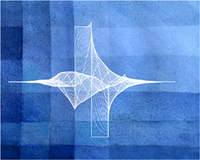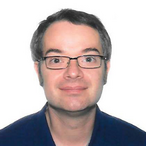AN INTRODUCTION TO WAVELETS AND THEIR APPLICATIONS
AN INTRODUCTION TO WAVELETS AND THEIR APPLICATIONS
8 May 2019
15 May 2019
22 May 2019
29 May 2019
*5 Jun 2019* (different room)
Always at 16.00-18.00
Univ. of Barcelona
Course description
The theory of wavelets, built with the join effort of different scientific communities in the 80’s, is said to be the most important development in signal analysis since the FFT. Wavelets provide a flexible tool to represent functions in a suitable way for many applications in image and sound processing, geophysics and many other areas. At the same time, they are of great theoretical importance in mathematics and physics, giving birth to active research areas today, such as time-frequency analysis and time-scale analysis. The goal of this course is to present the mathematical approach to wavelets starting from a basic knowledge of the Fourier representation and to show some of their applications using a free toolbox (to be specified).

8 May 2019
15 May 2019
22 May 2019
29 May 2019
*5 Jun 2019* (different room)
Always at 16.00-18.00
Univ. of Barcelona

Course description
The theory of wavelets, built with the join effort of different scientific communities in the 80’s, is said to be the most important development in signal analysis since the FFT. Wavelets provide a flexible tool to represent functions in a suitable way for many applications in image and sound processing, geophysics and many other areas. At the same time, they are of great theoretical importance in mathematics and physics, giving birth to active research areas today, such as time-frequency analysis and time-scale analysis. The goal of this course is to present the mathematical approach to wavelets starting from a basic knowledge of the Fourier representation and to show some of their applications using a free toolbox (to be specified).
Joaquim Bruna, UAB & BGSMath
Josep Maria Mondelo, UAB & BGSMath
Biosketch
Prof Bruna obtained his degree in Mathematics in 1975 at UB and finished hisa PhD thesis at UAB in 1978 under the supervision of Joan Cerdà. After postdoctoral positions in France and in the US, he came back to UAB, where he is presently professor at the Mathematics Department.
Research Interests
- Real Analysis
- Function theory in one and several variables
- Harmonic Analysis
- Global Analysis
- Mathematical aspects of signal processing
- Mathematical Consultancy
Josep Maria Mondelo
Biosketch
Josep Maria Mondelo obtained his degree in Mathematics in 1996 at UB, and finished his PhD thesis at UB in 2001 under the supervision of Prof. Gerard Gomez. After working as a research support technician at UPC, he obtained in 2002 his current position as associated professor at UAB. Most of his research activity is strongly based on scientific computing.
Research Interests
- Numerical computation of invariant objects of dynamical systems.
- Applications to Astrodynamics and Celestial Mechanics.
Programme
The course will consist of 5 two-hours sessions + 1 three-hour lab session as follows:
- Preliminaries: a) Overview of the Fourier transform, Poisson and Shannon’s formula. b) The theory of frames c) The Haar basis.
- The windowed Fourier transform. Gaborlets. The Balian-Low theorem. The Wilson and Malvar bases.
- The continuous wavelet transform and Calderon’s formula. Wavelet frames.
- Multiresolution analysis. Daubechie’s wavelets. The fast wavelet transform. Filter bank approach to wavelets.
- Why are wavelets useful? Sparse representations of usual function spaces, local regularity. A glimpse to compressed sensing.
- Lab session on applications.
References
- A wavelet tour of signal processing, S. Mallat, AP
- Ten lectures on wavelets, I. Daubechies, SIAM
- Wavelets and operators, Y. Meyer, Cambridge UP
- A first course in wavelets, E.Hernandez-G.Weiss, CRC Press
- Wavelets and filter banks, G.Strang, Wellesley-Cambridge Press
- Wavelets: a primer, C. Blatter, Taylor and Francis
- Wavelets made easy, Y. Nievergelt, Birkhauser


